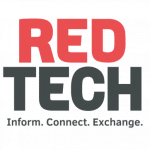Virtualization is one of the biggest technology shifts impacting radio broadcasting today. While the common consensus that more nimble, software-defined mixing consoles and remote contribution tools offer useful solutions for disaster recovery, temporary relocations, or pop-up studios, remains true, many pioneers are going all-in on virtual mixing alternatives for game-changing cost efficiencies, operational flexibility and collaboration friendly workflows.
However, evolving beyond traditional hardware-only consoles to adopt more virtual systems comes with its own set of challenges. From staff adapting to nontraditional work surfaces (e.g., touchscreens) to misconceptions around what is truly possible, technology and programming leaders are looking for simple, outcome-driven reasoning why to embrace software-first mixing tools. It’s not enough to have capability — it needs to make sense to use it!
Moving into virtualized environments can unlock production flexibility and power new ideas you may never have thought of before. And there’s a global community of radio professionals already using these tools. Let’s talk about why virtualization matters — and how it’s powering a wave of innovation in radio broadcasting and remote collaboration.
Efficiency everywhere
For many radio professionals, moving from traditional hardware consoles to virtualized systems can feel like a big change. We’re creatures of habit and love working with familiar, tactile surfaces. However, rapid advances in browser-based software-native consoles provide operators with incredibly responsive and intuitive interfaces that many, over time, find just as easy to operate and effective as a traditional desk. We’ve spent years developing and deploying hardware and software-based mixing systems based on customer feedback. Virtual mixing isn’t about replacing the much-loved physical mixer — it’s about elevating radio operations and opening growth opportunities with less clutter in the studio, fewer maintenance issues and unparalleled remote production flexibility, including quickly adapting to the need to relocate the show outside the normal facility in an emergency.
These systems also offer significant cost savings and more efficient operations, helping stations deliver exceptional productions from anywhere while sidestepping typical costs. When one of our customers’ star morning show hosts moved halfway across the country, they thought long and hard about investing in a remote physical studio — then they realized they could deploy a lightweight virtualized system for their team members to use at home from their preferred device, set them up with a microphone, and their listeners would have never known they weren’t still sitting in the studio in Chicago.
Or take a radio group in Knoxville, Tenn., as an example. The team wanted to try something different and extend its programming to a restaurant, harnessing a virtual mixing system to connect remotely and manage the broadcast from the restaurant, seamlessly mixing multiple sources and producing a new and dynamic show for listeners.
This adaptability opens up exciting new possibilities across more expansive locations such as stadiums, bars or entertainment venues. Highly reliable virtual systems using low-latency connectivity make real-time collaboration easy across distributed locations. If you have a creative idea about where and how to produce your next show, the chances are that it’s very achievable with an agile, virtualized mixing system like Axia Altus. These new ideas can bring new revenue at a very challenging time for our industry.
Stations we work with consistently tell us about the operational efficiencies and workforce benefits of adopting virtual systems. This flexibility is particularly valuable in allowing stations to shrink their footprint. For smaller stations or emerging businesses, going all-in on a nimble, virtualized approach means you can step past the potentially cost-prohibitive nature of a hardware-heavy setup. And there is also the option to forgo a physical location altogether.
Remotes in an AI era
An ever-growing proportion of the radio workforce is scattered in some way, contributing from multiple locations. At the same time, radio broadcasters are tasked with doing more with less — operating more efficiently while elevating listener experiences. As technology providers, it’s on us to help broadcasters navigate these needs by harnessing evolving technologies like cloud, automation and virtualization tools that serve and enhance the talent’s ability to create.
From virtual mixing and cloud-based automation to intelligent audio enhancements, broadcasters are looking to new technologies to streamline operations and enhance the listener experience. We see the role of virtualization as a revenue and creativity enabler for stations of all sizes. That’s why we’ll continue to meet our customers’ demands for solutions to practical, human issues around operational flexibility while championing technologies that make the most innovative remote production ideas more simple, affordable and effective.
The author is EVP of sales, marketing and strategy at Telos Alliance.
This article originally appeared in the May/June 2025 edition of RedTech Magazine

